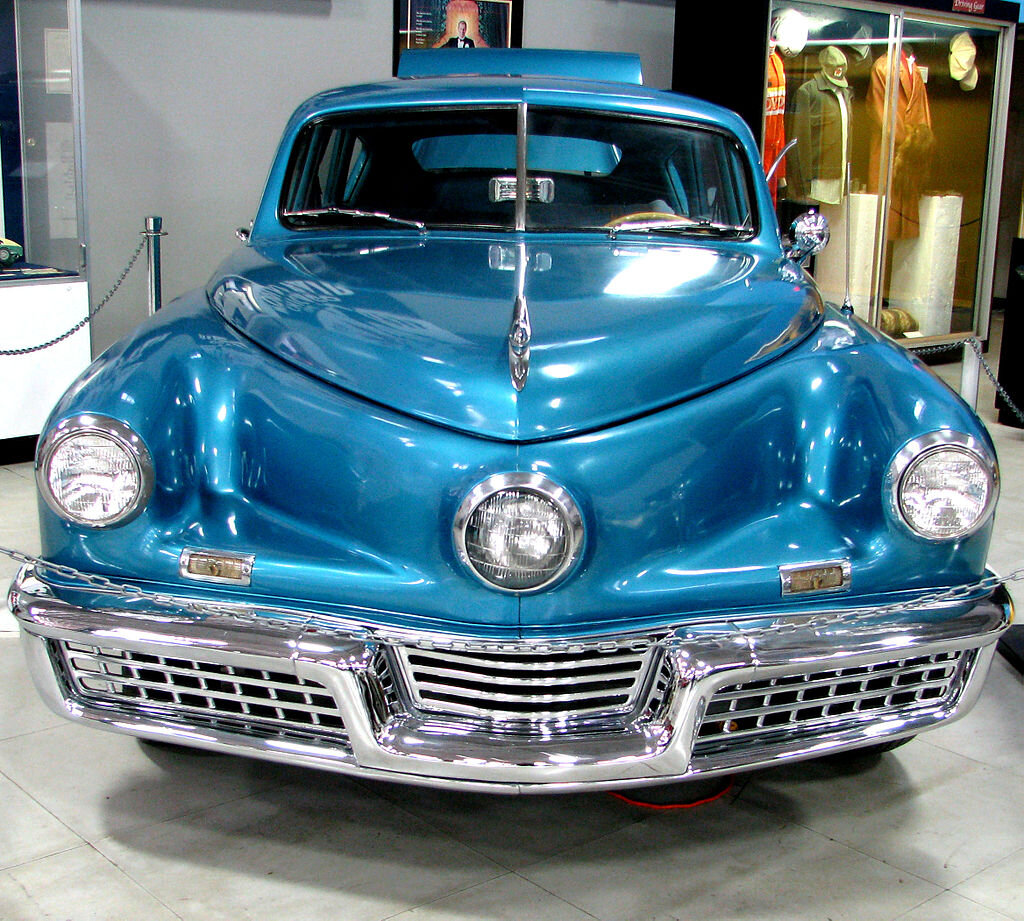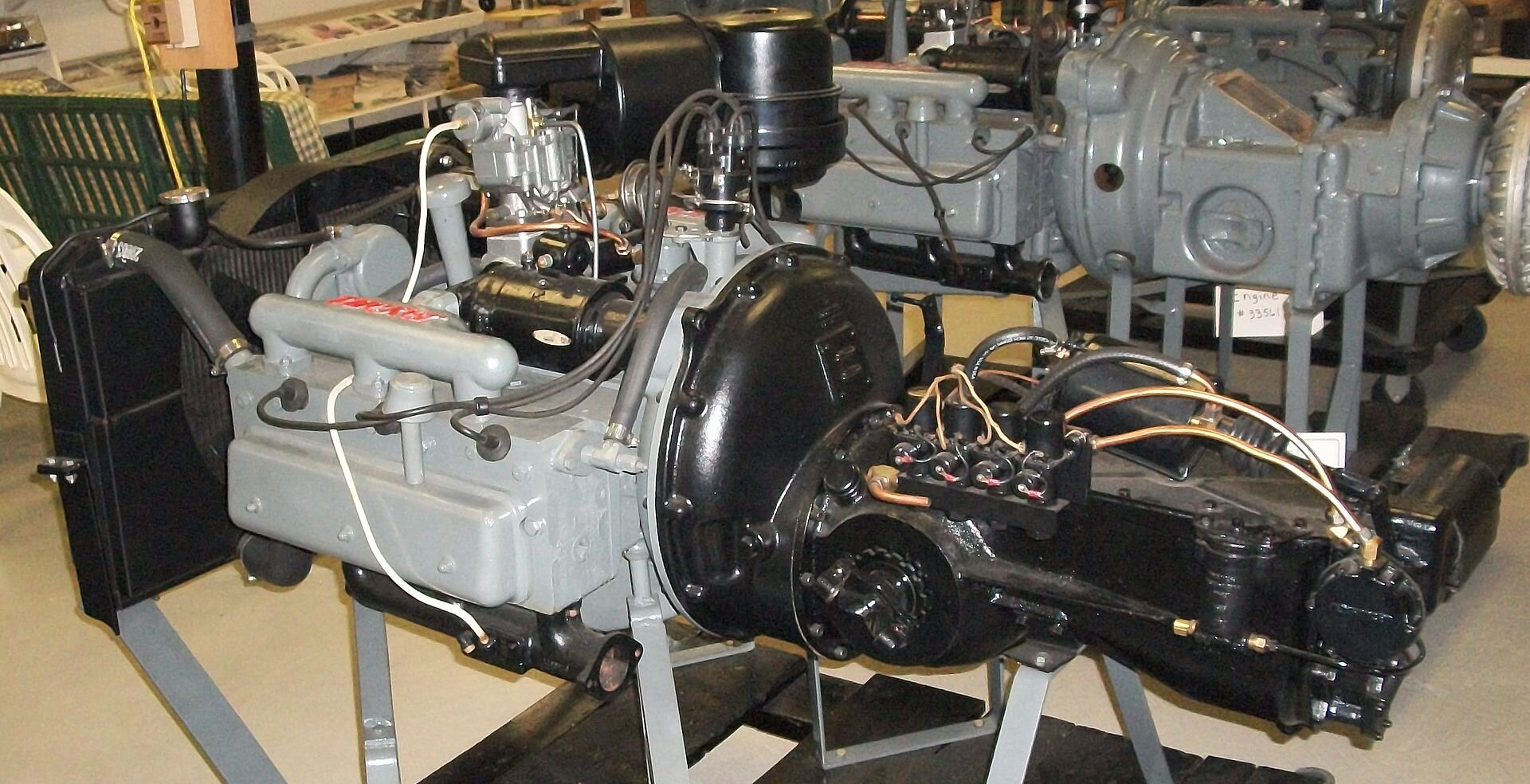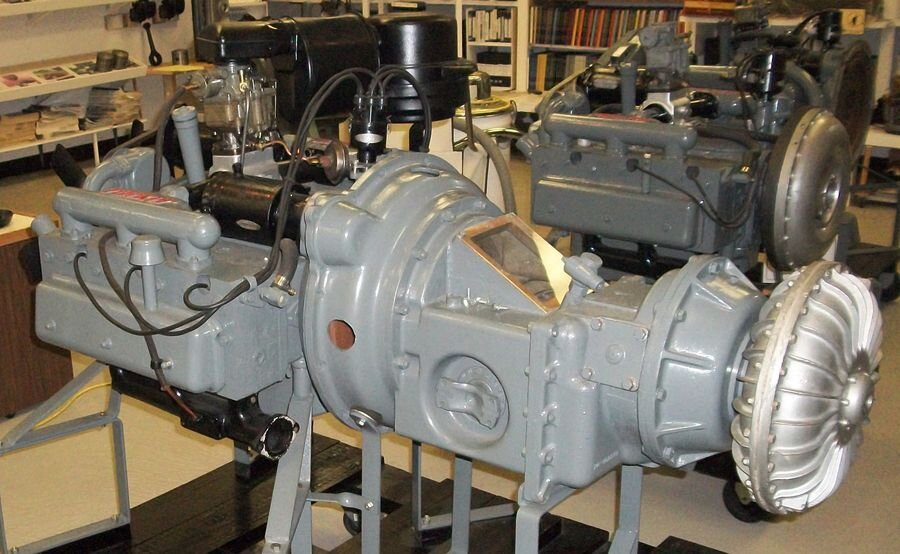Words by Dionysis Nanos
It’s time for part two of our trip down memory lane (not that anyone will have any actual memories of the Tucker 48 but still…) and this time we’re going to pick up from where we left off, that being the engine, and how different problems that arose created the need for, dare I say, interesting solutions, chief amongst which was the gearbox.
See, once the engine situation was resolved (it’s all in the first part don’t worry), and the car was making power, the problem of actually moving the car came up as, you now, a gearbox was needed among other things. Typical to Tucker, various designs were considered including a fairly normal for the time, Borg Warner designed 3-speed automatic, which was ultimately turned down by Preston Tucker who wanted to use his own transmission in the car. As such, the Tucker 48 came with 3 different transmissions… well 2 but we’ll get to that. Initially, it was found that the 4-speed transmission of the 1937 Cord 810 (that car is worth an article of its own), fit the 48, but it’s not like it didn’t come with its assortment of problems. To start, the transmissions were essentially manuals with pre-selected gears (basically semi-automatics) meaning that they were really fragile in the 810, let alone in a car that was heavier and more powerful like the 48. Also, Cord’s transmission hadn’t been in production for ten years at best, meaning that Tucker had to send his staff out to junkyards and used car dealers to buy used Cord 810s, bring them back to the Tucker factory in Ypsilanti, Michigan, remove them from the cars, recondition them and put them in the new 48s. About ten of these transmissions were found to be usable and were used in the production line, with many of them surviving to this day. But that’s not the end of the Cord Y-1…
While the Cord transmissions were being refurbished, two different projects were going on. The first was the work of the Ypsilanti Machine And Tool Company, which was tasked with refurbishing the Cord transmissions, and was an attempt at redesigning, strengthening and improving them, making them suitable for mass production. The Ypsilanti Y-1 (the first picture depicts the O-355 and Ypsilanti Y-1 combination), as it became known, had stronger gears and a larger case compared to its Cord predecessor, and was fitted to some production models, which still survive. But the Ypsilanti Y-1 wasn’t the only transmission available for the 48, as engineer Warren Rice came up with the “Tucker-Matic”. The Tucker-Matic was a continuously variable transmission, that was comprised of less moving parts compared to standard automatics and had one forward gear and one reverse gear. Only one car with the Tucker-Matic transmission exists, and the fact that the resulting engine-transmission unit was large (as you can tell from the second picture that shows the O-355 and Tucker-Matic combination which is larger than the Ypsilanti Y-1 equivalent), meant that the fuel tank had to be moved from under the rear seats to in front of the dashboard, which also improved weight distribution and driving dynamics. Which conveniently brings me to the suspension.
Of course, by now you should be able to tell that there’s no way Preston Tucker would use normal steel springs, when it came to his car’s suspension. Instead he wanted to use a rubber, four wheel independent suspension setup, similar to what was used in the Indianapolis 500 race cars. While the race style suspension meant that the handling was rather crisp, it also meant that the ride of the car was very stiff, eventually leading to three variations of the original suspension design. The first one featured a rubber torsion tube that lead to severe toe-in during breaking, so it couldn’t be used. The second design went with a rubber block that was sandwiched between the two control arms, which gave the car a ridiculously stiff ride. Finally the third design, went back to the rubber torsion tube, albeit a modified one, which corrected the toe-in issue.
The final rubber torsion tube set up used in the 48.
And so, the majority of the main practical issues of the car were solved. Everything was ready for the official unveiling, and finally the world would see just how far ahead of its time the Tucker 48 was… Or would it? Join us on the third and final part of our Tucker 48 special where we’ll go over the premiere, the scandal surrounding the company and we’ll also find out how much Detroit’s Big 3 played a role in the Tucker’s demise.




